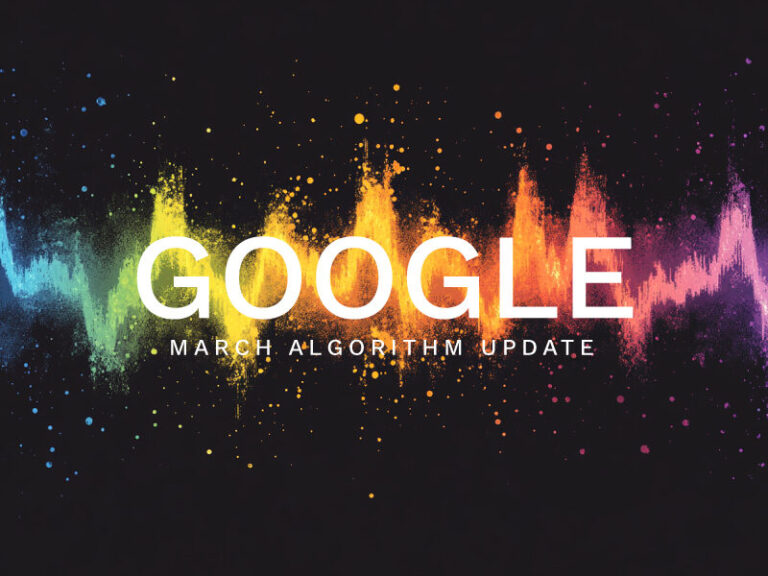How Answer Engines Are Making 90% of Websites Invisible
Can we keep up with the speed of innovation in the modern day?
Staying ahead of the curve is crucial for any business, including digital marketers, sales professionals, and web developers.
Answer Engine Optimisation (AEO) is an emerging concept gaining traction.
Let’s explore AEO’s significance, core components, implementation strategies, and future outlook.

Introduction to Answer Engine Optimisation (AEO)
Definition and Overview
Answer Engine Optimisation (AEO) is structuring and optimising content to provide direct, concise answers to user queries.
Unlike traditional Search Engine Optimisation (SEO), which focuses on improving website rankings on search engine results pages (SERPs), AEO aims to position content as the primary source for answer engines like voice assistants and AI-driven search tools.
Evolution from Traditional SEO to AEO
Traditional SEO strategies prioritise keyword optimisation, backlink building, and enhancing site speed to improve rankings.
However, with the advent of voice search and AI technologies, user behaviour has shifted towards seeking immediate, direct answers.
This change necessitates transitioning from traditional SEO to AEO, focusing on promptly delivering precise information.
Importance in the Current Digital Landscape
The rise of voice-activated devices and AI-powered search engines has transformed how users seek information. Users now expect quick, accurate responses to their queries.
Implementing AEO strategies ensures content meets these expectations, enhancing user experience and engagement.
Understanding the Core Components of AEO
Structured Data and Schema Markup
Utilising structured data and schema markup helps search engines understand the context of your content, increasing the likelihood of appearing in featured snippets and answer boxes.
Crafting Clear and Concise Answers
Providing direct and concise answers to common user queries enhances the chances of your content being selected by answer engines.
Utilising Question-Driven Headings
Incorporating headings that mirror common user questions improves content relevance and discoverability.
Adopting Conversational Language
Writing in a conversational tone aligns with the natural language processing of AI-driven search tools, improving content accessibility.
Optimising Answer Length
Keeping answers concise, typically between 40-60 words, caters to the brevity preferred by voice search responses.
Ensuring Contextual Relevance and Rich Content
Providing comprehensive and contextually relevant information establishes authority and trustworthiness.
Implementing AEO Strategies
Researching Popular Questions in Your Niche
Utilise tools like AnswerThePublic and Google’s People Also Ask’ to identify common queries related to your industry.
Applying Schema Markup (FAQ, Q&A, How-To)
Implementing appropriate schema markups enhances content visibility in search results.
Developing Dedicated Q&A Sections
Creating sections that address frequently asked questions improves user experience and content relevance.
Optimising Content for Voice Search Queries
Tailoring content to match the conversational nature of voice search queries increases the likelihood of being featured in voice search results.
Focusing on Local and Conversational Keywords
Incorporating locally relevant and conversational keywords enhances content relevance for targeted audiences.
Monitoring and Adjusting Based on Feedback
Regularly analysing performance metrics and user feedback allows for continuous optimisation of content strategies.
Leveraging Tools and Technologies for AEO
AI-Powered SEO Tools (e.g., SurferSEO, MarketMuse)
These tools provide insights into content optimisation opportunities, aligning with AEO best practices.
Structured Data Markup Tools
Utilising tools like Google’s Structured Data Markup Helper simplifies schema markup implementation.
Voice Search Optimisation Platforms
Platforms that analyse voice search trends assist in tailoring content to meet voice search demands.
Utilising Large Language Models (LLMs) for Content Creation
Leveraging LLMs like ChatGPT can aid in generating content that aligns with AEO principles.
The Role of Artificial Intelligence in AEO
Integration of AI in Search Engines
AI technologies enhance search engines’ ability to understand and process natural language queries, improving the accuracy of search results.
Impact of LLMs like ChatGPT, Gemini, and Claude
LLMs generate human-like responses, influencing how content is created and optimised for answer engines.
Future Trends in AI and AEO
Advancements in AI are expected to refine search capabilities further, emphasising the need for continuous adaptation of AEO strategies.
Measuring the Success of Your AEO Efforts
Tracking Voice Search Traffic Increases
Monitoring analytics for voice search traffic provides insights into the effectiveness of AEO strategies.
Evaluating Engagement with Q&A Content
Assessing user interaction with Q&A sections helps gauge content relevance and user satisfaction.
Monitoring Featured Snippets and Knowledge Panel Appearances
Tracking the frequency of your content appearing in featured snippets indicates successful AEO implementation.
Assessing AI Response Quotations
Evaluating how often AI tools reference your content reflects its authority and alignment with AEO principles.
Common Challenges and Mistakes in AEO
Overlooking Structured Data Implementation
Structured data is crucial for AEO because it helps search engines understand the context and purpose of content.
Even the best answers may only reach their intended audience with structured data or schema markup.
Failing to implement this can result in lost opportunities to appear in featured snippets or voice search results.
Common mistakes include missing FAQ, How-To, and Q&A schema, which are especially effective for AEO. Regular audits of structured data help ensure everything is in place.
Neglecting Regular Content Updates
Search engines and answer engines favour fresh, updated content. Neglecting to update older posts can decrease visibility, as newer or more relevant information from competitors may take precedence.
To avoid this, regularly review and refresh your high-performing pages with new insights, data, or answers to emerging questions.
Keeping content relevant shows search engines that your page is trustworthy and up-to-date, which is essential for AEO.
Providing Overly Detailed Initial Answers
While detailed answers are valuable, providing excessive detail at the beginning of your content can overwhelm the reader.
AEO relies on concise, direct answers that address the main query immediately. It’s better to start with a concise answer and provide additional context in the following sections for longer explanations.
This balance allows voice assistants and search engines to quickly deliver essential information without losing the opportunity to showcase more detailed insights for readers who want them.
Future Outlook of Answer Engine Optimization
Predictions for AEO in the Coming Years
As AI-driven answer engines evolve, AEO will likely become a primary focus for content creators.
The increasing integration of AI models like ChatGPT, Gemini, and Claude into search engines means that evident, conversational answers will be prioritised.
More advanced AI will also enable deeper contextual understanding, anticipating user needs based on behaviour patterns.
AEO strategies will likely expand to include interactive and personalised answers, providing users with tailored information.
Adapting to Continuous AI Advancements
AI capabilities are improving rapidly, and content creators must stay adaptable.
Advanced AI tools will favour content that mirrors natural human conversation and anticipates complex, multi-part questions.
Brands should prepare to optimise for multi-turn answers (answers that build on previous user queries).
Staying current with AI developments and regularly revisiting AEO strategies will be essential to remaining competitive.
Preparing for Emerging Search Behaviors
As people rely more on voice search and virtual assistants, search behaviour will continue to shift.
Searches are becoming more conversational and less keyword-dependent, requiring content directly addressing these new patterns.
Additionally, location-based and niche-specific searches will increase, creating an opportunity to capture highly targeted audiences.
AEO will need to incorporate local and situational data to meet the demands of these emerging trends.
Conclusion
Recap of Key Points
Answer Engine Optimisation (AEO) is an evolution of SEO focused on providing precise, concise answers to user queries, making content accessible to voice search and AI-driven answer engines.
AEO incorporates schema markup, conversational language, and short, direct responses to ensure visibility in an answer-oriented search environment.
The rise of AI technologies like ChatGPT, Gemini, and Claude makes AEO an essential component of modern digital marketing strategies.
Emphasising the Importance of AEO in Modern Digital Marketing
With digital marketing trends shifting towards instant answers and conversational queries, AEO stands out as a powerful method to connect with audiences.
Brands can enhance their visibility and engagement by focusing on user intent and optimising content for voice search and AI.
As answer engines become more sophisticated, AEO will only grow in relevance, establishing itself as a critical part of digital marketing.
Encouragement to Implement AEO Strategies
Implementing AEO strategies is a step toward future-proofing content for digital marketers, sales professionals, and web developers.
By embracing structured data, focusing on clear answers, and staying informed about AI advancements, brands can position themselves as authoritative sources.
Now is the time to optimise for AEO and establish a content strategy that meets today’s standards and tomorrow’s innovations.
Appendices
Glossary of AEO Terms
AEO (Answer Engine Optimisation): Optimising content to provide clear, concise answers for AI-driven search engines and voice search.
Structured Data: Code added to a webpage to help search engines understand its content.
Schema Markup: A form of structured data that helps categorise content into types like FAQ, Q&A, and How-To.
Featured Snippet: A highlighted answer box at the top of search results provides quick answers to user queries.
Voice Search Optimisation: Adapting content to be suitable for voice-activated search engines, focusing on conversational language and brevity.
Additional Resources and Readings
“Answer Engine Optimisation: How to Optimise Your Content for Voice Search and AI” by SurferSEO
“AEO vs. SEO: The Next Evolution in Content Optimisation” by MarketMuse
“The Impact of AI on Search Engines: Preparing for the Future of Digital Marketing” by SEMrush Academy
By following these guidelines, brands and marketers can harness the potential of AEO, position themselves as leaders in their industry, and stay ahead of the AI-driven digital wave.
References
WebFX. (2024). What Is AEO (Answer Engine Optimisation)? Retrieved from WebFX
SurferSEO. (2024). What Is Answer Engine Optimization (AEO)? 6 Steps To Elevate Your Reach. Retrieved from Surfer SEO
AEO Hive. (2024). Answer Engine Optimisation | AEO Hive Resource & Community. Retrieved from Archive









